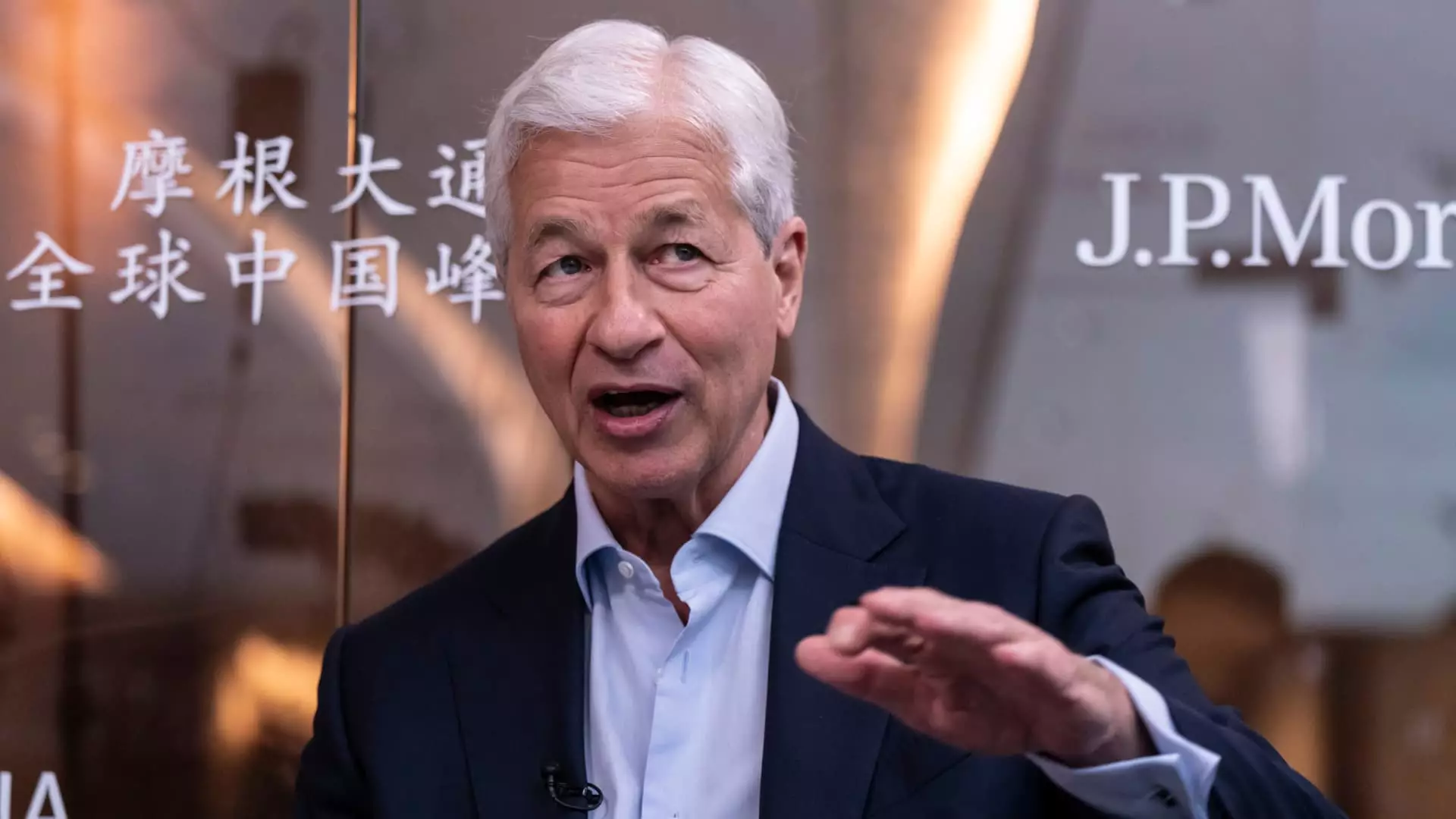As the second quarter earnings season begins to unfold, it’s tempting to interpret the initial reports as a barometer of corporate vitality. Yet, beneath the surface lies a troubling narrative — one of cautious optimism masking underlying vulnerabilities. The collective earnings growth projections hovering around 4.8% for the S&P 500 evoke more anxiety than confidence, especially as this marks the slowest growth rate since late 2023. In an era defined by geopolitical tensions, unpredictable tariffs, and relentless monetary tightening by the Federal Reserve, these figures do little to inspire genuine optimism. They serve as a stark reminder that many corporations are merely patching up their financial health rather than experiencing sustainable expansion.
The supposed resilience of the U.S. economy, often heralded by mainstream narratives, is built on fragile foundations. Industries like banking and tech—especially giants like JPMorgan Chase and Netflix—are navigating a minefield of economic uncertainties. While these companies have historically shown resilience, the current environment suggests that their recent earnings are more a product of temporary tailwinds—such as favorable currency exchange rates—rather than intrinsic strength. As corporations report these figures, investors must ask: are these numbers reflective of genuine growth, or just the quiet before a more significant storm?
Banking Giants: Illusions of Confidence Amid Mounting Turmoil
JPMorgan Chase, the behemoth of banking, exemplifies this paradox. Last quarter’s beating of analyst estimates seemed promising—yet, behind this façade lies a sobering forecast. Expectations of a sharp decline in earnings this quarter point to underlying fragility. Experts warn that Federal Reserve rate cuts, often perceived as a boon, could actually dampen revenue streams for banks like JPMorgan, which heavily depend on interest income. The narrative shifts from one of robust banking profits to one of cost-cutting and expense management. This strategic pivot underscores a vital truth: even the most admired financial institutions recognize that sustained growth is increasingly elusive under current economic conditions.
Similarly, Wells Fargo, which has struggled with its reputation and operational challenges, is expected to report flat revenue growth. The narrative here isn’t one of thriving stability but of cautious survival. Market analysts acknowledge that while Wells Fargo has historically beaten estimates, the market has already priced in many of these expectations, rendering the actual reports less impactful than they once might have been. This is a sober reflection of where the banking industry stands—treading water, hoping that future interest rate policies and economic stimuli will lift them out of stagnation.
Citigroup’s performance mirrors this complex scenario. Its previous beat on earnings owes much to a buoyant trading environment, yet the outlook for the upcoming quarter suggests that higher expenses and provisions may temper its growth. Despite outperforming peers this year, Citigroup must grapple with the reality that its recent success could be more about opportunistic trading than enduring fundamentals. Here lies a central dilemma: the confidence in these financial giants is increasingly misplaced, driven more by market speculations than tangible economic resilience.
Manufacturers and Healthcare: The Hidden Signs of Strain
Outside the banking sector, companies like Johnson & Johnson and Morgan Stanley reveal the cracks in the broader economic armor. Johnson & Johnson, a staple of stability, faces the imminent threat of tariffs—particularly the aggressive levies threatened by political figures. The prospect of a 200% tariff on imported pharmaceuticals could drastically impair profitability. The fact that this seemingly resilient healthcare company is vulnerable to geopolitical risks highlights a disconcerting truth: no sector appears truly insulated anymore.
Morgan Stanley’s reported earnings hint at a different story—a mix of moderate growth and potential pitfalls. Its performance, bolstered by a booming equity trading division, is not enough to dispel concerns about dependence on volatile financial markets. In a landscape where even profitable investment banks rely heavily on market conditions, the sustainability of such earnings is questionable. The optimism surrounding Morgan Stanley’s prospects must be tempered by the understanding that a significant downturn in market activity could drastically impact its revenue streams.
The same skepticism applies to Goldman Sachs, whose earnings beat expectations last quarter due to surging equities trading. Despite impressive stock performance—up 23% this year—this rise is largely driven by short-term market movements and investor sentiment rather than fundamental business improvements. The risk is that this momentum is fleeting. The reliance on trading revenues exposes Goldman to the whims of market volatility, which can evaporate as quickly as it appears.
The Tech Sector and Consumer Giants: Mirages of Growth
In the technology and consumer sectors, giants like Netflix encapsulate the volatile nature of modern corporate earnings. Netflix’s upcoming report promises a substantial revenue and earnings increase, yet this optimism must be approached with skepticism. Streaming platforms are highly sensitive to subscriber metrics and content costs—both of which are subject to intense competitive pressure. A poor quarter could swiftly unravel recent gains, exposing the fragile assumptions underpinning investor enthusiasm.
The broader theme emerging from these reports is a cautious acknowledgment of economic fragility. Many companies now operate in a “survivor mode,” with earnings driven more by temporary factors and market conditions than sustainable growth. As the earnings season progresses, the stark reality will become increasingly apparent: the illusion of corporate strength is just that—a carefully maintained illusion, masking the underlying vulnerability of the U.S. economy in an era marked by geopolitical chaos, inflationary pressures, and policy shifts.
This reality compels investors and policymakers alike to reconsider the narrative of resilience. Rather than subscribing to the myth that companies are thriving, there must be a sober recognition of the risks—risks that could rapidly undermine the current market optimism and force a reevaluation of valuations across the

Leave a Reply